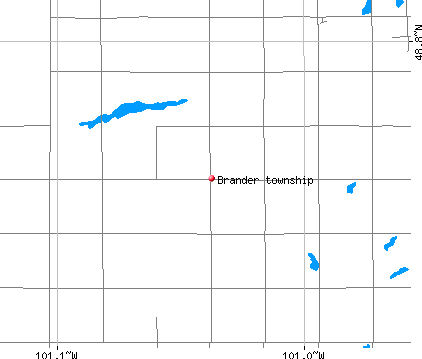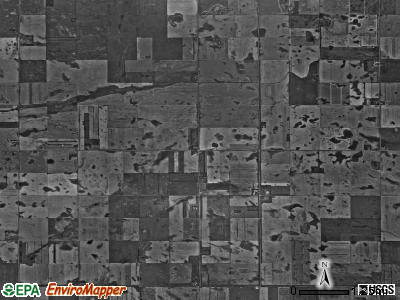Brander township, Bottineau County, North Dakota (ND) detailed profile
Land area: 35.7 sq. mi.
Water area: 0.3 sq. mi.
Population: 60 (all rural)
| Males: 26 | |
| Females: 34 |
Occupied houses/apartments: 60 (55 owner occupied, 5 renter occupied)
| % of renters here: | 8% |
| State: | 33% |
Races in Brander township:
- White Non-Hispanic: 98.3%
- American Indian and Alaska Native: 1.7%
Median age of males: 34.5
Median age of females: 32.5
Discuss North Dakota on our huge forum. We have over 16 million posts!
Average household size: 3.16
| Brander township: | 3.2 people |
| North Dakota: | 2.4 people |
Average family size: 3.86
Estimated median household income in 2013: ($0 in 1999)
Median contract rent in 2013: $494 (lower quartile is $205, upper quartile is $333)| Brander township: | $53,607 |
| North Dakota: | $55,759 |
| Here: | $494 |
| State: | $622 |
Estimated median house or condo value in 2013: $98,827 (it was $44,900 in 2000)
| : | $98,827 |
| North Dakota: | $155,400 |
Mean price in 2013:
Detached houses: $141,342
Here: $141,342 State: $187,941
Townhouses or other attached units: $122,289
Here: $122,289 State: $172,567
Mobile homes: $56,361
Here: $56,361 State: $51,641
| Population density: 2 people per square mile | (very low). |
Notable locations in this township outside city limits:
Churches in Brander township include: Saint Paul Church (A), Betania Church (B). Display/hide their locations on the map
Percentage of households with unmarried partners: 5.3%
No gay or lesbian households reported


Housing units in structures:
- One, detached: 2
- Agriculture, forestry, fishing and hunting (22%)
- Construction (14%)
- Transportation equipment (8%)
- Food (6%)
- Miscellaneous manufacturing (6%)
- Plastics and rubber products (4%)
- Accommodation and food services (4%)
- Educational services (12%)
- Accommodation and food services (11%)
- Finance and insurance (11%)
- Miscellaneous manufacturing (8%)
- Agriculture, forestry, fishing and hunting (7%)
- Food and beverage stores (7%)
- Health care (6%)
- Farmers and farm managers (22%)
- Other production occupations including supervisors (10%)
- Metal workers and plastic workers (9%)
- Vehicle and mobile equipment mechanics, installers, and repairers (7%)
- Other sales and related workers including supervisors (5%)
- Operations specialties managers except financial managers (3%)
- Material recording, scheduling, dispatching, and distributing workers (3%)
- Other production occupations including supervisors (11%)
- Other office and administrative support workers including supervisors (7%)
- Waiters and waitresses (6%)
- Farmers and farm managers (5%)
- Other sales and related workers including supervisors (5%)
- Computer specialists (4%)
- Other teachers and instructors, education, training, and library occupations (4%)
Means of transportation to work:
Household type by relationship:
Households: 0
16 married couples with children.
5 single-parent households (0 men, 5 women).